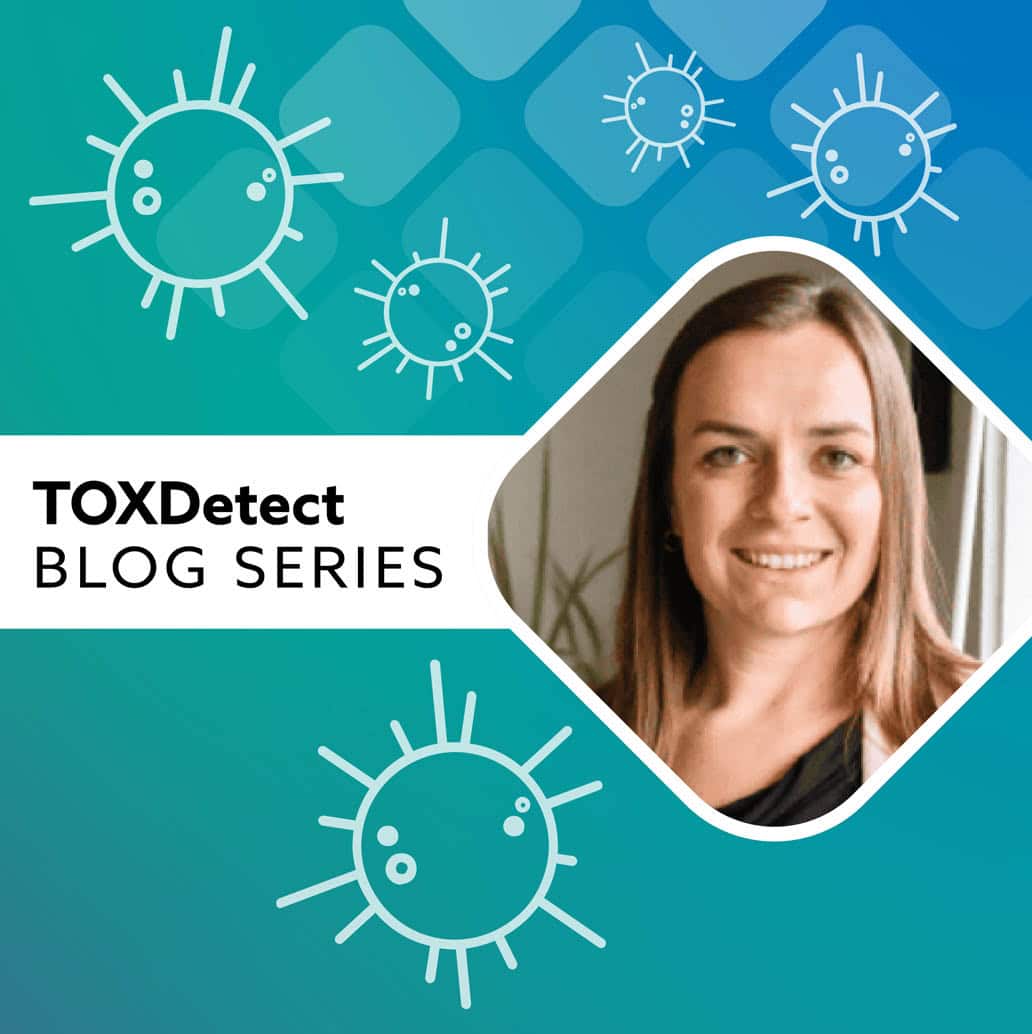Toxic exposures are ubiquitous in our environment. These environmental toxicants can have serious repercussions in terms of symptoms and health impacts ranging from neurological and respiratory dysfunction to fertility issues and even cancerous implications. Being aware of and identifying symptoms and concerns related to toxic exposure is a vital step in the process of guiding patients to regaining control of their health.
This blog explores key categories of harmful exposures—including phthalates, bisphenols, VOCs, parabens, pesticides, and more—and highlights how Mosaic Diagnostics’ TOXDetect Profile® can help identify and address them. Understanding where these exposures come from and how they affect health is the first step toward empowering patients to take back control of their well-being.
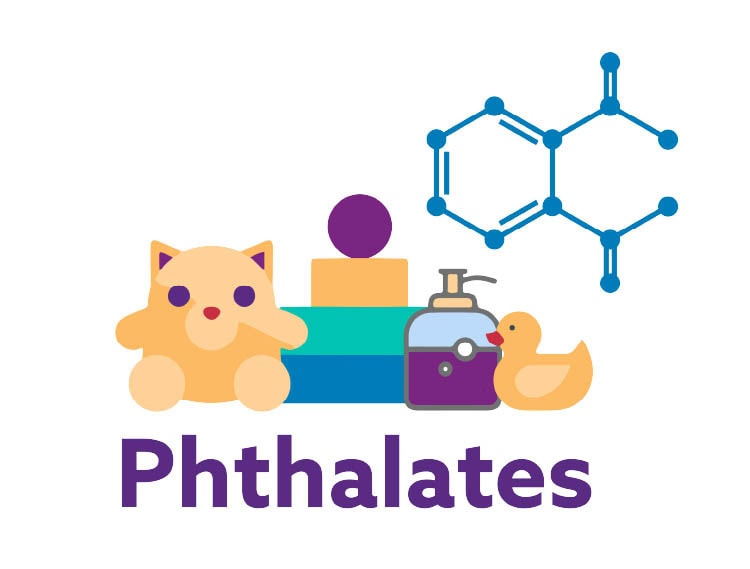
About Phthalates
Phthalates are found in most products that are made with or have contact with plastics during production. Phthalates are referred to as “everywhere chemicals” because they are found in hundreds of products.1
Metabolites of phthalates measured on the TOXDetect include monoethyl phthalate (MEP), monobutyl phthalate (MBP), mono-2ethylhexyl phthalate (MEHP), mono-(2-ethyl-5-oxoexyl) phthalate (MEOHP), and monoisobutyl phthalate (MiBP).
Exposure to phthalates may lead to reproductive damage, neurological concerns, and respiratory issues. Phthalates are known endocrine disruptors and carcinogens.1-4
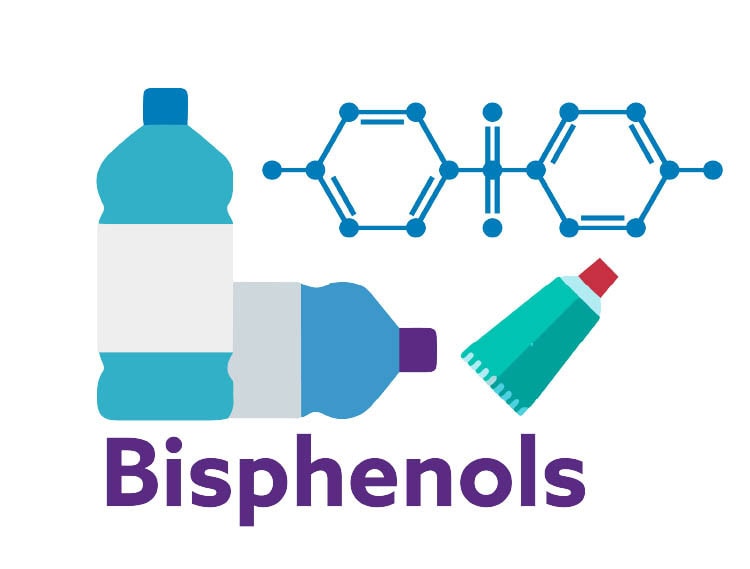
About Bisphenols
Bisphenol S (BPS) and Bisphenol A (BPA) are measured on the TOXDetect Profile. Bisphenols are used in the production of plastics and resins as well as food and drink containers, water bottles, thermal receipt papers and more. Exposure to BPA may lead to altered reproductive and developmental effects, increased risk of obesity, diabetes, cardiovascular disease, neurotoxicity and some cancers. Many companies now produce “BPA free” products; however, some BPA alternatives such as BPS have also raised concerns about potential similar and more severe health impacts.5-8
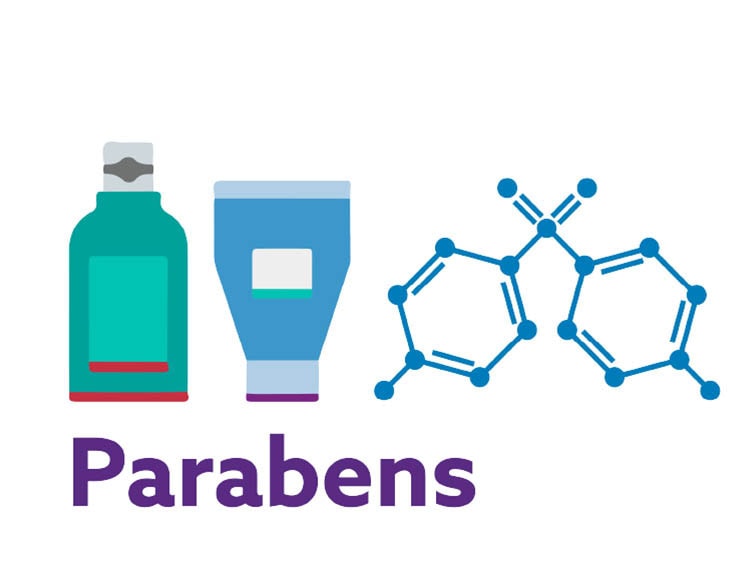
About Parabens
Parabens are synthetic chemicals used as preservatives in cosmetics, personal care products, and some foods. They are primarily used to prevent the growth of bacteria, yeast,and mold. Metabolites and exposure markers of parabens measured on the TOXDetect include methylparaben, ethylparaben, propylparaben, and butylparaben. Paraben exposure may lead to endocrine disruption, increased body mass index (BMI), and has links to breast cancer. 20-22
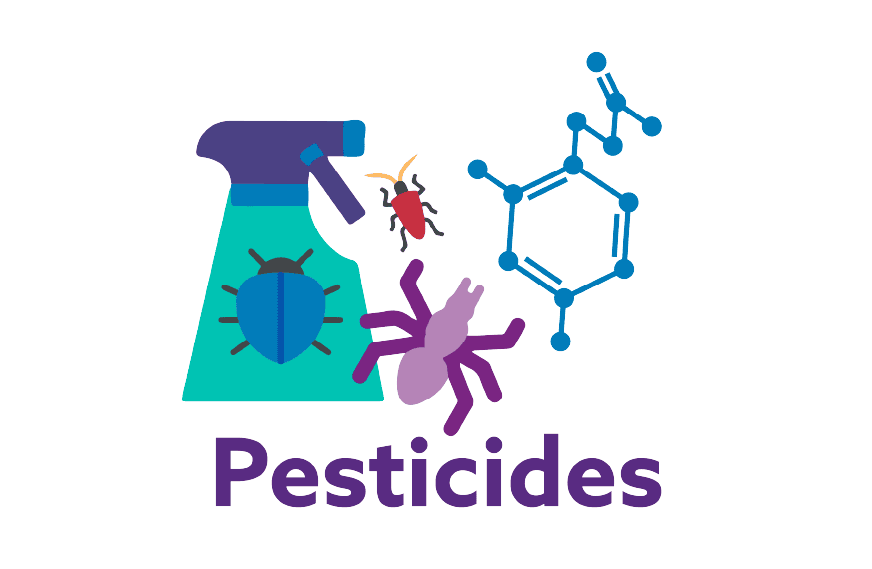
About Pesticides
Pesticides are used ubiquitously in the environment. From rural farmlands to urban golf courses and parks, these chemicals are often utilized. Many possible health impacts can arise from exposure.
Atrazine mercapturate (AM) is a widely used herbicide that inhibits photosynthesis in plants, primarily targeting broadleaf weeds in crops like corn and sugarcane. Exposure to atrazine can disrupt the endocrine system, causing reproductive and developmental issues, neurotoxicity, liver damage, and has been linked to an increased risk of certain cancers.23
2,4 dichlorophenoxyacetic acid (2,4-D) is measured on the TOXDetect Profile. 2,4-D is one of the most widely used herbicides worldwide. Health impacts include endocrine disruption, reproductive issues, developmental damage, and increased risk of non-Hodgkin’s lymphoma.24,25
3-phenoxybenzoic acid (3-PBA) is an analyte of pyrethroids. Pyrethroids are widely used in agriculture, household insect control, and veterinary medicine. Neurotoxicity, endocrine disruption, cardiovascular concerns, and all-cause mortality have been associated with pyrethroid exposure.26,27
Diethylphosphate (DEP) from organophosphates, a widely used pesticide in agriculture and residential settings, is an analyte reported on the TOXDetect Profile. Organophosphate exposure is linked to neurological deficits, neurodegenerative diseases, peripheral nerve effects, and neurodevelopmental issues.27
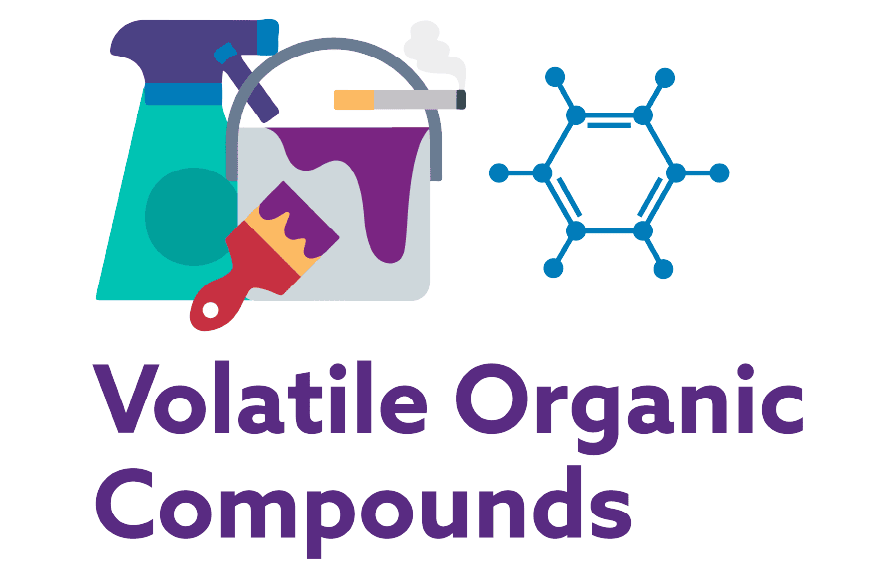
About Volatile Organic Compounds
Volatile organic compounds (VOCs) are chemical compounds that easily evaporate under normal atmospheric conditions into the air. VOCs originate from many sources such as building materials, beauty products, cleaning supplies, vehicle emissions, construction processes, gasoline vapors and more. VOCs are considered both indoor and outdoor air pollutants.9
The TOXDetect tests for numerous analytes of common VOCs. Understanding their health impact as pollutants provides insight into understanding how critical it is to recognize exposure.
2-3-4 methylhippuric acid (2,-3-,4-MHA) is an analyte of xylene. Xylene is an aromatic hydrocarbon widely used as a solvent in industry and medical technology. Studies confirm xylene effects many organ systems; especially the liver and kidneys.10
Phenylglyoxylic acid (PGO) is an analyte of styrene which utilizes ethylbenzene in the manufacturing process. Styrene is widely used to make plastics and rubbers and can be found in various products such as insulation, carpet backing, and food containers. Styrene and ethylbenzene have been found to cause reproductive issues and to have neurotoxic effects. Exposure also increases the incidence of lymphohematopoietic cancers such as leukemia and lymphoma.11
N-acetyl phenyl cysteine (NAP) is an analyte that measures benzene exposure. Benzene is used in some petroleum products such as motor fuels and solvents. Exposure can lead to systemic health effects such as respiratory, hepatic, cardiovascular, immune, nervous, and endocrine dysfunction. Benzene is also a known carcinogen.12
N-acetyl (2-cyanoetyl) cysteine (NACE) from acrylonitrile assess exposure to this VOC. Acrylonitrile can be found in acrylic fiber clothing, carpeting, and plastic food containers. Symptoms of exposure may include respiratory irritation, dizziness, cyanosis, limb weakness, and convulsions. Acrylonitrile is a known carcinogen.13
N-acetyl (propyl) cysteine (NAPR) is an analyte of 1-bromopropane which is used as a solvent in dry cleaning, degreasing agents, and in adhesives. Some symptoms of exposure to 1-bromopropane include headache, decreased sensation, respiratory irritation, paresthesia, and stumbling. Health impacts include neurotoxicity, hematopoietic disorders, DNA damage, and respiratory toxicity.14,15
N-acetyl (3,4-dihydroxybutyl) cysteine (NADB) from 1,3 butadiene is assessed utilizing the TOXDetect Profile. 1,3 butadiene is used in synthetic rubber production for car and truck tires. It can also be found in car exhaust. Health impacts of exposure include neurological dysfunction, reproductive and developmental effects, cardiovascular disease, and hematological damage. 1,3 butadiene has been classified as a human carcinogen.16,17
2-hydroxyethyl mercapturic acid (HEMA) is an analyte of ethylene oxide and vinyl chloride. Ethylene oxide is used in the production of plastics, to sterilize medical equipment, and is found in antifreeze. Exposure carries risks of developmental concerns, endocrine disruption, neurotoxicity, and reproductive issues. The International Agency for Research on Cancer (IARC) concluded that ethylene oxide is a known human carcinogen and linked to increased risks of leukemia and non-Hodgkin’s lymphoma.18 Vinyl chloride is used to manufacture polyvinyl chloride (PVC) which is used in pipes, wire, and packaging materials. Exposure to vinyl chloride can cause symptoms of dizziness, headache, drowsiness, loss of consciousness, and hepatocellular changes. The IARC concluded it is a human carcinogen.19
Other Toxicants:
Many other toxicants with serious health implications exist in the environment. The TOXDetect Profile measures additional analytes that aid in identifying further exposure sources.
Diphenyl phosphate (DPP) is an analyte of triphenyl phosphate. Triphenyl phosphate is commonly used as a flame retardant in furniture, textiles, and electronics. It may be found in personal care products such as nail polishes and cosmetics as well as in food packaging materials. Triphenyl phosphate impacts endocrine function and reproduction by altering thyroid function and decreasing semen quality.28
N-acetyl (carbomethyl) cysteine (NAE) from acrylamide is measured on the TOXDetect Profile. Acrylamide is formed when starchy foods such as potatoes, grains, and coffee beans are cooked at high temperatures. Acrylamides are also found in cosmetic products. Exposure may be linked to neurotoxicity, genotoxicity, reproductive issues, hepatotoxicity, and increased cardiovascular risk. Acrylamide may also increase the risk of some cancers.29,30
Perchlorate is used in fireworks, explosives, road flares, and in rocket fuel. Exposure inhibits the uptake of iodine by the thyroid leading to hypothyroidism and other thyroid disorders. Pregnant women, infants, and children are especially susceptible to the effects of perchlorate.31
Oxybenzone (OBZ) is a chemical used in sunscreens and personal care products to absorb UV radiation, but it can pass through the skin barrier and placenta. Health concerns associated with exposure include endocrine disruption such as menstrual cycle irregularities and morea nd has potential links to Hirschsprung’s disease in neonates.32,33
Once we begin to recognize common and serious conditions that are associated with toxic exposure, we can support improved health outcomes for patients. Mosaic Diagnostic’s TOXDetect Profile offers a powerful tool in identifying specific toxicants that increase toxic body burden. Many unpleasant symptoms may be traced back to toxicant exposure; stay on the lookout!

Uncover the Environmental Toxicants Behind Your Unexplained Symptoms
By analyzing key metabolites, TOXDetect Profile provides personalized insights into your toxin exposure, empowering you to take control of your health.
Nervous
- Acrylamide
- Atrazine
- Benzene
- Bisphenol A (BPA)
- Bisphenol S (BPS)
- 1-Bromopropane
- Mercapturate
- Organophosphate
- Pesticides
- Phthalates
- Pyrethroid
- Styrene
- Vinyl Chloride
- Xylene
Respiratory
- Acrylonitrile
- Benzene
- 1-Bromopropane
- Phthalates
- Styrene
Reproductive
- Acrylamide
- Atrazine Mercapturate
- Bisphenol A (BPA)
- Bisphenol S (BPS)
- 1,3 Butadiene
- Ethylene Oxide
- Oxybenzone (OBZ)
- Phthalates
- Styrene
- Triphenyl Phosphate
- Vinyl Chloride
- Volatile Organic Compounds (VOCs)
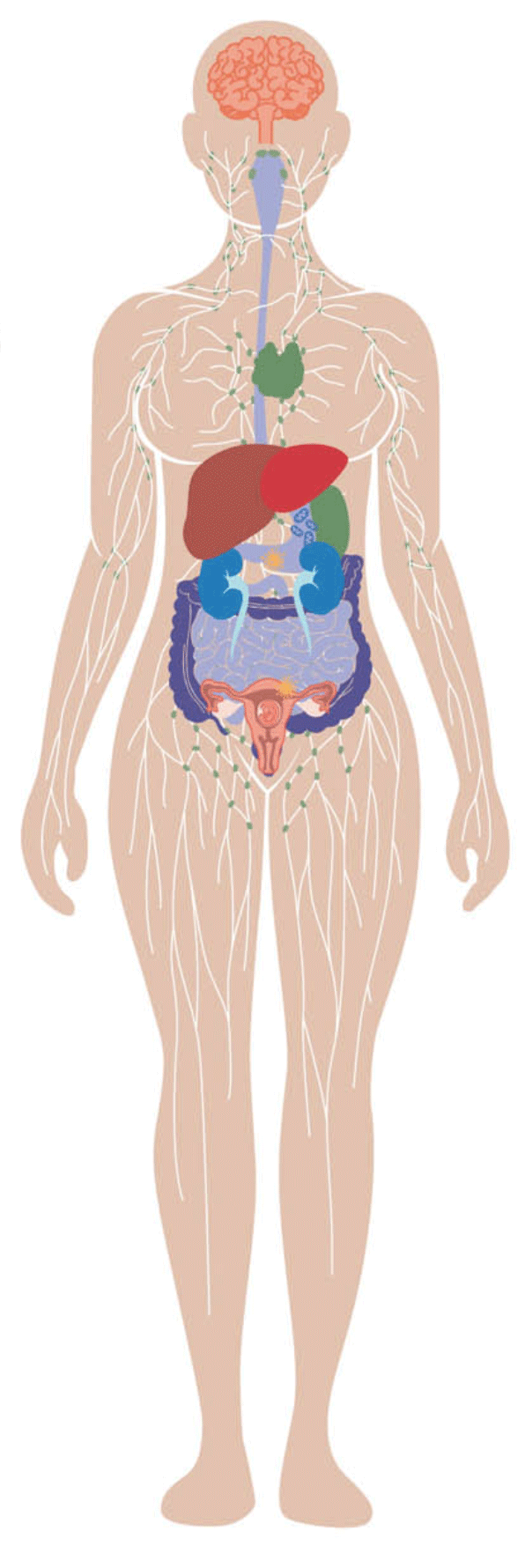
Endocrine
- Acrylamide
- Atrazine Mercapturate
- Benzene
- Bisphenol A (BPA)
- Bisphenol S (BPS)
- Oxybenzone (OBZ)
- Parabens
- Phthalates
- Perchlorate
- Phthalate
- Triphenyl Phosphate
Cardiovascular
- Acrylamide
- Benzene
- Bisphenol A (BPA)
- Bisphenol S (BPS)
- 1,3 Butadiene
- Pyrethroids
Carcinogen
- Acrylamide
- Acrylonitrile
- Atrazine Mercapturate
- Benzene
- Bisphenol A (BPA)
- Bisphenol S (BPS)
- 1,3 Butadiene
- Di (2-ethylhexyl)
- Ethylene Oxide
- Parabens
- Phthalate
- Styrene
- Vinyl Chloride
- 2,4 dichlorophenoxyacetic acid (2,4-D) (Pesticide)
References
1. Benjamin S, Masai E, Kamimura N, Takahashi K, Anderson RC, Faisal PA. Phthalates Impact Human health: Epidemiological Evidences and Plausible Mechanism of Action. Journal of Hazardous Materials. 2017 Oct;340:360–83.
2. Liu G, Cai W, Liu H, Jiang H, Bi Y, Wang H. The Association of Bisphenol A and Phthalates with Risk of Breast Cancer: A Meta-Analysis. International Journal of Environmental Research and Public Health. 2021 Mar 1;18(5):2375.
3. Segovia Mendoza M, Nava Castro KE, Palacios Arreola MI, Garay Canales C, Morales Montor J. How Microplastic Components Influence the Immune System and Impact on Children health: Focus on Cancer. Birth Defects Research. 2020 Aug 6;112(17):1341–61.
4.Wang Y, Qian H. Phthalates and Their Impacts on Human Health. Healthcare. 2021 May 18;9(5):603.
5. Ma Y, Liu H, Wu J, Yuan L, Wang Y, Du X, et al. The Adverse Health Effects of Bisphenol A and Related Toxicity Mechanisms. Environmental Research. 2019 Sep;176:108575.
6.Pang Q, Li Y, Meng L, Li G, Luo Z, Fan R. Neurotoxicity of BPA, BPS, and BPB for the Hippocampal Cell Line (HT-22): An Implication for the Replacement of BPA in Plastics. Chemosphere. 2019 Jul;226:545–52.
7. Oh J, Choi JW, Ahn YA, Kim S. Pharmacokinetics of bisphenol S in humans after single oral administration. Environment International. 2018;112:127-133. doi:10.1016/j.envint.2017.11.020
8.Zhang YF, Shan C, Wang Y, et al. Cardiovascular toxicity and mechanism of bisphenol A and emerging risk of bisphenol S. Science of The Total Environment. 2020;723:137952. doi:10.1016/j.scitotenv.2020.137952
9.Technical Overview of Volatile Organic Compounds [Internet]. US EPA. 2014 [cited 2023 Nov 8].
10. Langman JM. Xylene: its toxicity, measurement of exposure levels, absorption, metabolism and clearance. Pathology. 1994;26(3):301-309. doi:10.1080/00313029400169711
11. The Environmental Protection Agency (EPA). (1992). Ethylbenzene. In epa.gov (No. 100-41–4).
12. Huff J, Infante PF. Styrene Exposure and Risk of Cancer. Mutagenesis. 2011 Jul 1;26(5):583–4.
13. Styrene [Internet]. National Institute of Environmental Health Sciences. [cited 2023 Nov 10].
14. U.S. Department of Health and Human Services Public Health Service Agency for Toxic Substances and Disease Registry (ATSDR). ATSDR: toxicological profile information sheet. Benzene. Choice Reviews Online. 2003 Feb 1;40(06):40-3428-40–3428.
15. U.S. Department of Health and Human Services Public Health Service Agency for Toxic Substances and Disease Registry (ATSDR). ToxGuideTM for Acrylonitrile.[cited 2024 Oct]
16. U.S. Department of Health and Human Services Public Health Service Agency for Toxic Substances and Disease Registry (ATSDR). ToxGuideTM for 1-Brompopropane.[cited 2024 Oct]
17. Toraason M, Lynch DW, DeBord DG, Singh N, Krieg E, Butler MA, et al. DNA Damage in Leukocytes of Workers Occupationally Exposed to 1-bromopropane. Mutation Research/Genetic Toxicology and Environmental Mutagenesis. 2006 Jan;603(1):1–14.
18. U.S. Department of Health and Human Services Public Health Service Agency for Toxic Substances and Disease Registry (ATSDR). ToxGuide™ for 1,3-Butadiene. [cited 2024 Feb 7].
19. Penn A, Snyder CA. 1,3-Butadiene and Cardiovascular Disease. In: Comprehensive Toxicology [Internet]. Elsevier; 2018 [cited 2024 Feb 8]. p. 538–44.
20. Lester C, Hewitt NJ, Müller-Vieira U, Mayer M, Ellison C, Duplan H, et al. Metabolism and plasma protein binding of 16 straight- and branched-chain parabens in in vitro liver and skin models. Toxicology in Vitro. 2021 Apr;72:105051.
21. Charles AK, Darbre PD. Combinations of parabens at concentrations measured in human breast tissue can increase proliferation of MCF 7 human breast cancer cells. Journal of Applied Toxicology. 2013 Jan 31;33(5):390–8.
22. Kolatorova L, Sramkova M, Vitku J, Vcelak J, Lischkova O, Starka L, et al. Parabens and Their Relation to Obesity. Physiological Research. 2018 Nov 12;S465–72.
23. U.S. EPA, Toxicity and Exposure Assessment for Children’s Health. Atrazine Chemical Summary . TEACH Chemical Summaries. Published online April 24, 2007. Accessed November 8, 2024. https://archive.epa.gov/region5/teach/web/pdf/atrazine_summary.pdf
24. Forde MS, Robertson L, Laouan Sidi EA, Côté S, Gaudreau E, Drescher O, et al. Evaluation of Exposure to Organophosphate, Carbamate, Phenoxy Acid, and Chlorophenol Pesticides in Pregnant Women From10 Caribbean Countries. Environmental Science: Processes & Impacts. 2015;17(9):1661–71.
25. de Azevedo Mello F, Magalhaes Silva BB, Barreiro EBV, Franco IB, Nogueira IM, Nahas Chagas PH, et al. Evaluation of Genotoxicity After Acute and Chronic Exposure to 2,4-dichlorophenoxyacetic Acid Herbicide (2,4-D) in Rodents Using Machine Learning Algorithms. The Journal of Toxicological Sciences. 2020;45(12):737–50.
26. Bao W, Liu B, Simonsen DW, Lehmler HJ. Association Between Exposure to Pyrethroid Insecticides and Risk of All-Cause and Cause-Specific Mortality in the General US Adult Population. JAMA Internal Medicine. 2020 Mar 1;180(3):367.
27. Koureas M, Tsakalof A, Tsatsakis A, Hadjichristodoulou C. Systematic Review of Biomonitoring Studies to Determine the Association Between Exposure to Organophosphorus and Pyrethroid Insecticides and Human Health Outcomes. Toxicology Letters. 2012 Apr;210(2):155–68.
28. Wang C, Chen H, Li H, Yu J, Wang X, Liu Y. Review of Emerging Contaminant Tris(1,3-dichloro-2-propyl)phosphate: Environmental Occurrence, Exposure, and Risks to Organisms and Human Health.v Environment International. 2020 Oct;143:105946.
29. Capuano E, Fogliano V. Acrylamide and 5-hydroxymethylfurfural (HMF): A review on metabolism, toxicity, occurrence in food and mitigation strategies. LWT – Food Science and Technology. 2011;44(4):793-810. doi:10.1016/j.lwt.2010.11.002
30. Wang B, Wang X, Yu L, Liu W, Song J, Fan L, et al. Acrylamide Exposure Increases Cardiovascular Risk of General Adult Population Probably by Inducing Oxidative Stress, Inflammation, and TGF- 1: A Prospective Cohort Study. Environment International. 2022 Jun;164:107261.
31. U.S. Department of Health and Human Services Public Health Service Agency for Toxic Substances and Disease Registry (ATSDR). ToxGuide™ for Perchlorates. [cited 2024 Feb 7].
32. DiNardo, J. C., & Downs, C. A. (2019). Can oxybenzone cause Hirschsprung’s disease? Reproductive Toxicology (Elmsford, N.Y.), 86, 98–100. https://doi.org/10.1016/j.reprotox.2019.02.014
33. Mustieles, V., Balogh, R. K., Axelstad, M., Montazeri, P., Márquez, S., Vrijheid, M., Draskau, M. K., Taxvig, C., Peinado, F. M., Berman, T., Frederiksen, H., Fernández, M. F., Marie Vinggaard, A., & Andersson, A.-M. (2023). Benzophenone-3: Comprehensive review of the toxicological and human evidence with meta-analysis of human biomonitoring studies. Environment International, 173, 107739. https://doi.org/10.1016/j.envint.2023.107739
